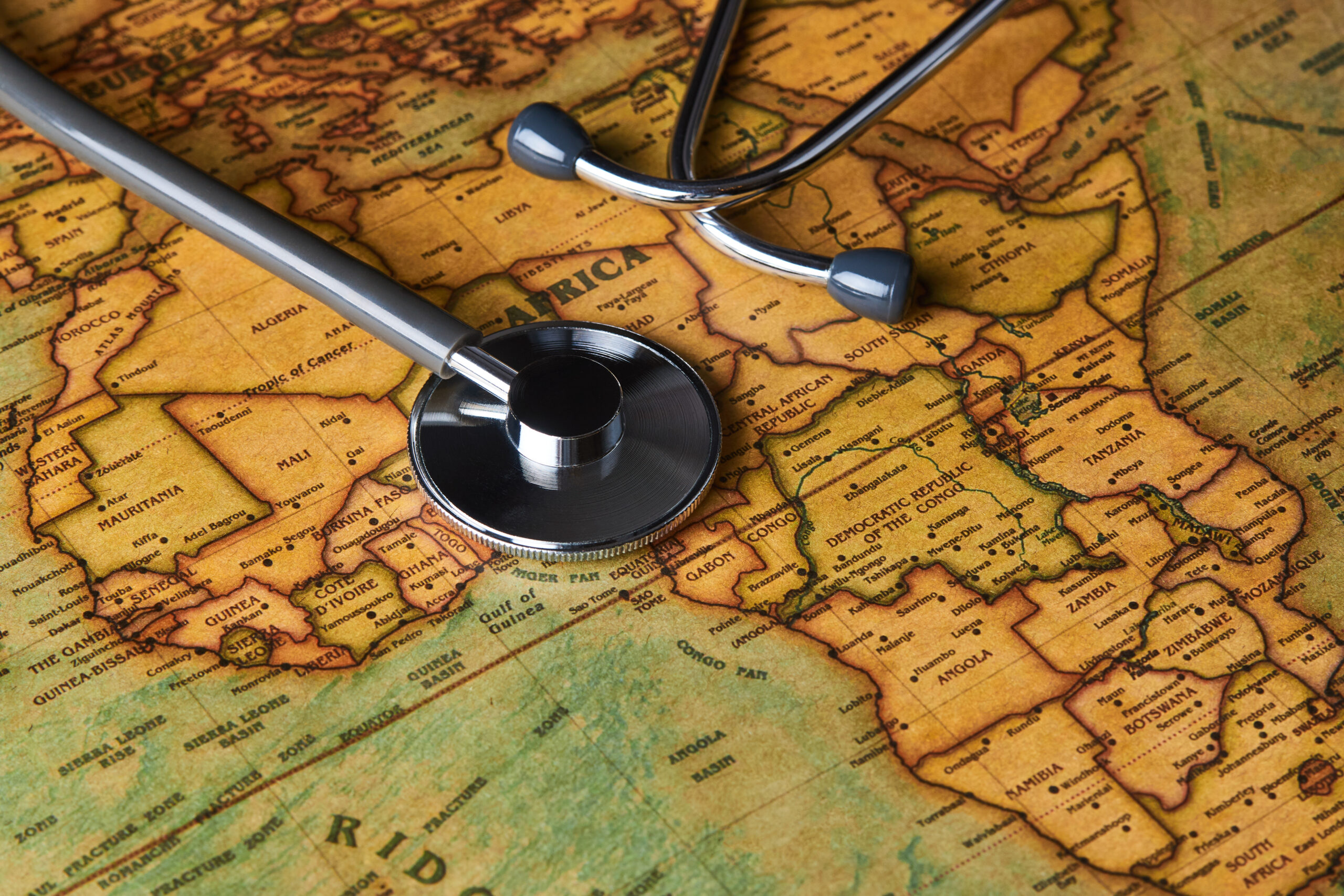Pandemic Laws Still Leave Antimicrobial Resistance in the Cold
Over the past five years, governments have rewritten global health law at a rapid pace. In response to the COVID-19 pandemic, states revised the International Health Regulations (IHR) in 2024 and signed a pandemic treaty in 2025, alongside billions in new preparedness funding.

Published
Author
Share
Over the past five years, governments have rewritten global health law at a rapid pace. In response to the COVID-19 pandemic, states revised the International Health Regulations (IHR) in 2024 and signed a pandemic treaty in 2025, alongside billions in new preparedness funding. However, one health threat already claiming more lives annually than HIV/AIDS or malaria is conspicuously absent from these landmark texts: antimicrobial resistance (AMR).
AMR occurs when bacteria, viruses, parasites, and fungi adapt to survive the very drugs designed to eliminate them. It renders life-saving medicines like antibiotics less effective or entirely ineffective. Every use of antimicrobials in human or animal health, agriculture, or manufacturing exerts evolutionary pressure on microbes, leading to resistant strains that can spread across humans, animals, environments, and borders.
AMR: Five Pillars, One Governance Challenge
AMR is driven by human activity and spans multiple sectors. Scholars often frame it around five interlocking social challenges:
- access, where many countries still struggle obtaining essential antimicrobials;
- stewardship, since overuse and misuse accelerate resistance;
- prevention because weak infection control allows resistant pathogens to spread;
- innovation, where antimicrobial R&D stalls under sales-based business models rewarding volume over long-term effectiveness; and
- equity, as AMR both reflects and worsens global health disparities.
No government department, country, international organization, or treaty addresses all five. AMR demands a unified approach built on sustained cooperation focused on maintaining antimicrobial effectiveness for everyone. The new IHR and Pandemic Treaty do not yet address this crucial need.
The IHR and Pandemic Treaty
The revised IHR (2024) and new pandemic treaty (2025) were designed to trigger faster alerts, improve information sharing, and guarantee fairer access to medical countermeasures during emergencies. Yet both remain geared toward acute outbreaks and their relationship remains unsettled. That event-focused lens limits their relevance to AMR, which develops gradually and often outside hospitals. The IHR have been used to flag isolated “superbug” cases. But mandatory reporting of every resistant infection would overwhelm under-resourced systems, and neither instrument funds the laboratories and monitoring infrastructure required, particularly in low-income countries.
Why the Gap Matters
Leaving AMR at the margins forfeits the chance to embed long-term commitments, funding, and cross-sector coordination into global health law. It also reflects deeper structural challenges: the benefits of prudent antimicrobial use are shared globally, while the costs of resistance are felt locally and immediately, making cooperation harder. AMR is a multi-sector problem, but negotiations have centred narrowly on human health, sidelining agriculture, trade, and environmental drivers where difficult trade-offs arise. Neither establishes the global targets, financing, or enforcement tools AMR requires. Without such mechanisms, commitments remain confined to voluntary action and political declarations, and the momentum of the COVID era risks dissipating.
A Pragmatic Legal Path Forward
Fortunately, three politically realistic steps can move the AMR agenda forward.
- One option is to make targeted revisions or add an annex to the IHRwith clear triggers for reporting significant resistance events, such as pan-resistant infections with confirmed international spread, and fold AMR laboratories into core-capacity financing. Because IHR amendments are binding unless countries opt out, this approach would enable change quickly.
- A second possibility is an AMR protocol to the Pandemic Treaty, akin to the Paris Agreement under the UNFCCC. A protocol would let agriculture and environment ministries negotiate provisions on antimicrobial use, wastewater discharge standards, and technology transfer without reopening the entire treaty.
- A third route is a standalone framework convention on antimicrobials, with universal rules, differentiated obligations, and national action plans aligned to a global AMR goal—analogous to the 2°C target in climate policy. Regular conferences of involved parties and an independent scientific panel would help to keep science and politics aligned.
Each option has trade-offs. Amendments leverage existing institutions but risk shoehorning AMR into outbreak frameworks. A protocol depends on parties agreeing to expand scope. A new convention demands years of diplomacy and could add complexity to an already dense legal landscape. Geopolitical tensions and competing crises, from wars to climate change to pandemic access and benefit sharing, may make incremental reforms more achievable in the near term. Still, AMR is too urgent to wait. Progress may well depend on seizing any opportunity that arises and multiple pathways at once, wherever political appetite can be found.
Immediate Actions While Lawyers Negotiate
As the saying goes, law moves slowly; bacteria do not. International legal reforms often take years of negotiation, ratification, and implementation, which is a glacial pace compared to microbes that can develop resistance and spread in a matter of months. In the meantime, countries and donors can take practical steps within existing legal frameworks to slow resistance and safeguard access. Regional surveillance hubs could be strengthened to integrate human, animal, and environmental data, building on WHO’s GLASS network. Governments and funders could pilot subscription or “pull” incentives that pay for antimicrobial availability rather than sales volume, decoupling profits from overuse. Development bank loans and trade agreements could carry AMR benchmarks for pharmaceutical supply chains, aligning economic growth with antimicrobial stewardship. Finally, international trade law already allows governments to put public health first by setting aside patents in a crisis. That means countries can authorize local production or import of affordable generic medicines, ensuring access without waiting years for patents to expire.
Each of these measures is achievable without new treaties and could deliver tangible benefits well before any formal AMR instrument.
Conclusion
The latest IHR revisions and the new pandemic treaty promise faster alerts and fairer vaccine sharing when the next pandemic arrives. Yet they leave us exposed to the slow, lethal creep of AMR. Without adapting these legal tools for long‑horizon, multisectoral threats, today’s reforms may look, in retrospect, like installing fire extinguishers while a gas leak silently fills the room.
A grueling series of negotiations may push states toward caution, slowing new rules. Just as plausibly, the new frameworks now in place could serve as scaffolding for rapid add‑ons, including annexes, protocols, or entire instruments. Either way, the first step is the same: recognizing antimicrobial effectiveness as a globally shared resource and giving AMR the legal force already granted to the world’s headline pandemic risks.
This post is part of a digital symposium called Innovation, Law, and Ethics in International Bioscience. To read the related posts, click here.
Acknowledgment: The research for this blog post received support from the Novo Nordisk Foundation (NNF) through a grant for the scientifically independent Collaborative Research Program in Bioscience Innovation Law (Inter-CeBIL Program – Grant No. NNF23SA0087056).



Leave a Reply
You must be logged in to post a comment.